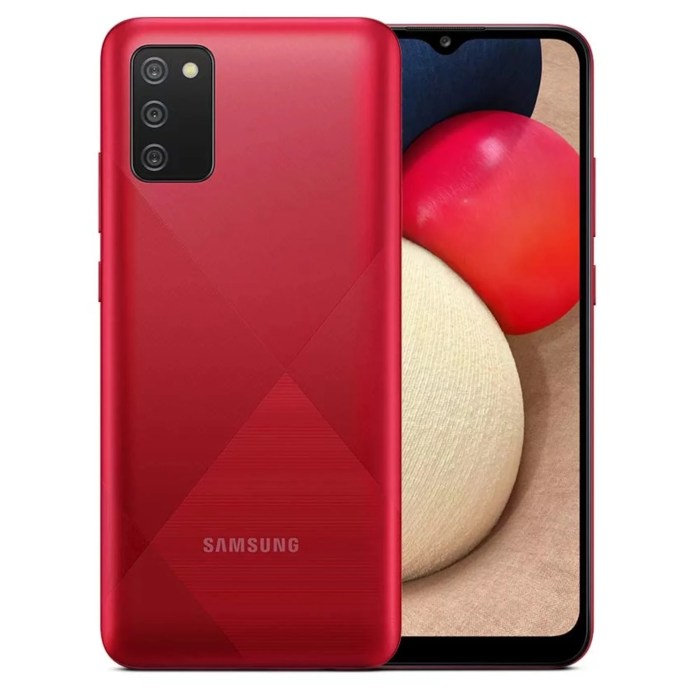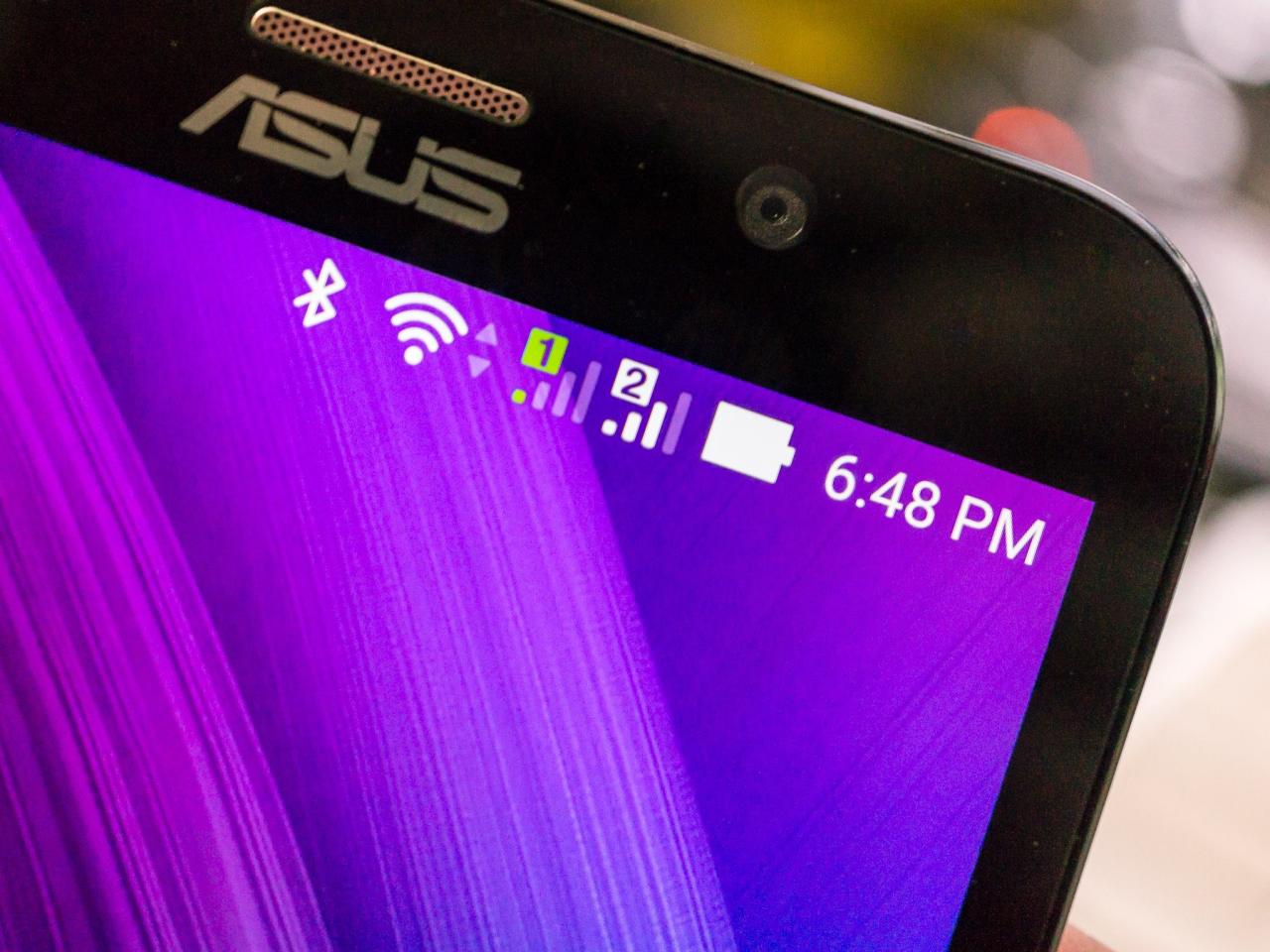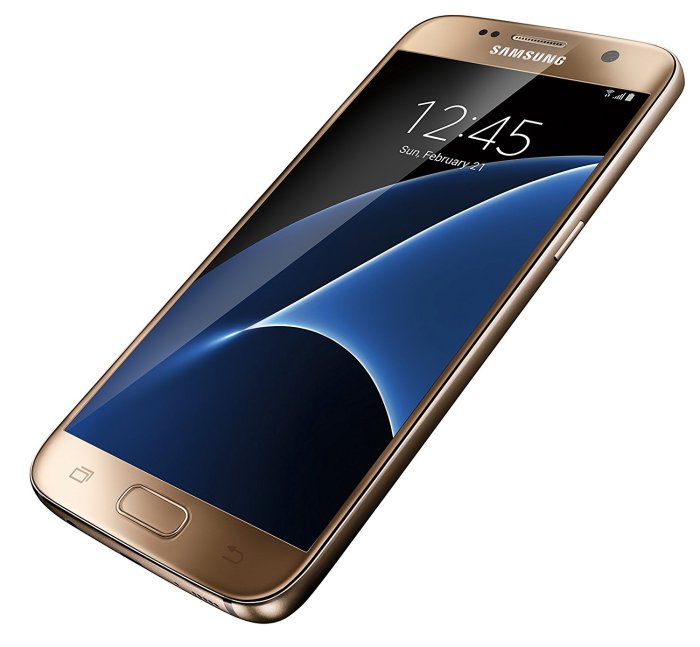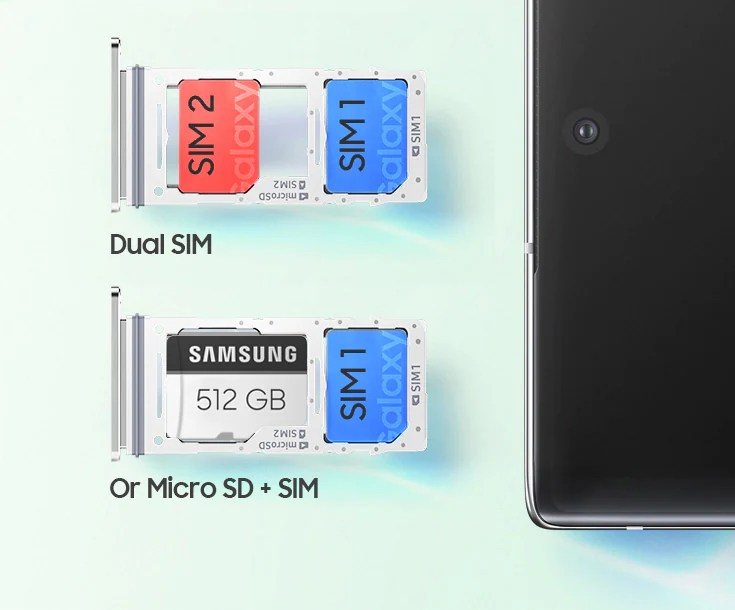samsung galaxy dual sim offers users the remarkable ability to utilize two phone numbers within a single device, seamlessly blending personal and professional lives. This functionality is not just a convenience but a necessity for frequent travelers and multitaskers, providing flexibility and connectivity. With various Samsung Galaxy models supporting dual SIM technology, users can expect a range of specifications that enhance their smartphone experience, ensuring they stay connected wherever they go.
From advanced connectivity options to user-friendly management of contacts and settings, the Samsung Galaxy dual SIM feature enriches the smartphone experience. As we delve into the specifics of different models, comparisons, setup instructions, and the advantages and disadvantages associated with dual SIM technology, readers will gain a comprehensive understanding of how this feature can elevate their mobile usage.
Overview of Samsung Galaxy Dual SIM Features

The Samsung Galaxy lineup has embraced dual SIM technology, allowing users to manage two phone numbers from a single device. This feature caters to a wide range of needs, from frequent travelers who want to avoid roaming charges to professionals who prefer separating work and personal calls. With its advanced specifications and connectivity options, Samsung ensures that dual SIM functionality enhances user experience seamlessly.The dual SIM feature offers several notable benefits, significantly enhancing smartphone utility.
Users can maintain separate contacts and messaging services for personal and professional numbers, enabling better organization. Moreover, dual SIM smartphones can connect to multiple networks simultaneously, providing a backup in case one network fails. This can result in improved call quality and data speed, allowing users to stay connected without interruptions.
Specifications of Samsung Galaxy Models Supporting Dual SIM
Samsung has incorporated dual SIM capabilities in various Galaxy models, ensuring that users have a range of options to choose from. Here are some key specifications of notable dual SIM models:
- Galaxy S21: Features a Dynamic AMOLED 2X display, triple-camera system, and supports dual SIM functionality with 5G connectivity.
- Galaxy A52: Equipped with a Super AMOLED display, quad-camera system, and allows for dual SIM use with 4G LTE support.
- Galaxy Note 20: Offers a stunning display and powerful performance, featuring dual SIM slots that support both physical SIM and eSIM technology.
- Galaxy M32: A budget-friendly option with a vibrant display and a dual SIM setup, providing excellent value for users seeking affordability.
Connectivity Options with Dual SIM Functionality
The connectivity capabilities of Samsung Galaxy dual SIM devices extend beyond just making calls. Users benefit from the ability to switch between different network providers, optimizing for coverage and cost. This flexibility can be crucial when traveling internationally or in areas with poor network service.In addition to standard voice calls and SMS, dual SIM smartphones can leverage the following connectivity options:
- 4G LTE and 5G Connectivity: Users can activate both SIMs on high-speed networks, choosing which SIM to use for data services based on availability and pricing.
- VoLTE Support: Both SIMs can support Voice over LTE technology, enabling clearer voice calls while using data.
- Dual SIM Dual Standby (DSDS): Allows both SIMs to be active simultaneously, with the device routing calls and messages depending on user preferences.
- Network Selection: Users can easily switch between networks for better reception based on their location, ensuring constant connectivity.
“The integration of dual SIM technology in Samsung Galaxy devices represents a significant advancement in mobile connectivity, promoting efficiency and convenience for users across the globe.”
Comparison of Different Samsung Galaxy Dual SIM Models

Samsung has been a leader in the smartphone market, consistently offering innovative devices that cater to various consumer needs. Among these, the Samsung Galaxy Dual SIM models stand out due to their ability to manage two SIM cards simultaneously, making them an ideal choice for users who balance personal and professional communications. This section delves into the key differences between various Samsung Galaxy dual SIM models, highlighting how each caters to different user preferences and requirements.
Key Differences Between Samsung Galaxy Dual SIM Models
Understanding the unique features of each Samsung Galaxy dual SIM model is essential for consumers looking to make an informed decision. The following points encapsulate the fundamental differences that set these models apart:
- Design and Build: Variations exist in dimensions, weight, and materials used, influencing portability and durability.
- Display Technology: Models differ in display size, resolution, and technology (AMOLED vs. LCD), affecting visual quality and user experience.
- Processor and Performance: Different chipsets and RAM configurations lead to varying performance levels, impacting multitasking and gaming capabilities.
- Camera Specifications: Camera setups and features vary, with some models offering advanced photography options like multiple lenses and enhanced low-light performance.
- Battery Life: Battery capacity and optimization differ, influencing the overall longevity of the device during regular use.
- Software Features: Some models are equipped with additional software enhancements and features tailored to improve user interaction and customization.
Comparison Table of Popular Samsung Galaxy Dual SIM Models
A comparative analysis through a table format provides a clear snapshot of key specifications and pricing, assisting potential buyers in their decision-making process.
| Model | Display | Processor | Camera | Batteries | Price (approx.) |
|---|---|---|---|---|---|
| Samsung Galaxy A52 | 6.5″ AMOLED, FHD+ | Snapdragon 720G | 64MP + 12MP + 5MP + 5MP | 4500mAh | $349 |
| Samsung Galaxy S21 | 6.2″ Dynamic AMOLED 2X | Exynos 2100 | 12MP + 64MP + 12MP | 4000mAh | $799 |
| Samsung Galaxy Note 20 | 6.7″ AMOLED, FHD+ | Exynos 990 | 108MP + 12MP + 12MP | 4500mAh | $999 |
| Samsung Galaxy M32 | 6.4″ AMOLED, FHD+ | MediaTek Helio G80 | 64MP + 8MP + 2MP + 2MP | 6000mAh | $229 |
User Reviews and Ratings for Top Samsung Galaxy Dual SIM Devices
User feedback plays a significant role in understanding the real-world performance of smartphones. Several top Samsung Galaxy dual SIM devices have received attention for their features and usability. Reviews often highlight the following aspects:
- Samsung Galaxy A52: Praised for its vibrant display and excellent battery life, users appreciate the camera versatility and overall performance in daily tasks.
- Samsung Galaxy S21: Recognized for its flagship performance and camera capabilities, many users note its premium build quality, though some mention the higher price point as a consideration.
- Samsung Galaxy Note 20: Users commend the productivity features and S Pen integration, making it a favorite for professionals who require multitasking capabilities.
- Samsung Galaxy M32: Valued for its affordability and long-lasting battery, users recommend it as a reliable device for those seeking essential smartphone functions without breaking the bank.
In summary, the range of Samsung Galaxy dual SIM models provides options for various preferences, from budget-friendly choices to high-end premium devices.
Setting Up Dual SIM on Samsung Galaxy Devices: Samsung Galaxy Dual Sim
Configuring dual SIM settings on Samsung Galaxy smartphones enhances your communication flexibility, allowing you to manage two numbers seamlessly. This feature is particularly useful for individuals who wish to separate personal and professional contacts or those who frequently travel and need to utilize local SIM cards.To effectively set up dual SIM functionality, follow these steps to ensure your device is ready for optimal performance.
Whether you are new to dual SIM usage or looking to refine your settings, this guide provides clear instructions for a hassle-free setup.
Step-by-Step Guide for Configuring Dual SIM Settings
Setting up dual SIM on your Samsung Galaxy device is a straightforward process. Here’s how to do it:
1. Insert SIM Cards
Power off your device.
Locate the SIM card tray using the ejector tool.
Insert your two SIM cards into the tray, ensuring they are securely placed in their respective slots.
2. Power On the Device
Turn your device back on.
Wait for the device to recognize both SIM cards.
3. Access Settings
Open the Settings app from the home screen or app drawer.
Scroll down and select Connections.
4. Select SIM Card Manager
Tap on SIM Card Manager to view your SIM settings.
Here, you will see both SIM cards listed.
5. Enable SIM Cards
Turn on both SIM cards by toggling the switches next to their names.
You can assign default settings for calls, texts, and mobile data.
Managing Contacts and Settings for Dual SIM Usage
Efficient management of contacts and settings can enhance your dual SIM experience. To organize your contacts according to the SIM cards, utilize the following methods:
Labeling Contacts
Edit contacts to include SIM card information. This can help in identifying which number to use for a specific contact. When editing a contact, select the appropriate SIM card for that contact to default calls and messages.
Setting Defaults
Go to SIM Card Manager in your settings.
Choose your preferred default SIM for calls and messages. This setting ensures that outgoing communications default to the selected SIM without needing to specify each time.
Using Call and Message Preferences
When making a call or sending a message, you have the option to select which SIM to use. This provides flexibility when contacting someone from a specific number.
The Galaxy Note 10 Lite offers a powerful combination of features, making it an attractive option for those who want premium performance without the flagship price. With its S Pen integration, users can take notes and navigate seamlessly, adding to the device’s productivity capabilities.
Troubleshooting Common Dual SIM Setup Issues
While setting up dual SIM functionality can be straightforward, you may encounter some common issues. Below are potential problems and solutions:
SIM Not Recognized
Ensure that both SIM cards are properly seated in the tray.
Check if the SIM cards are active and not locked.
For those seeking a well-rounded smartphone, the Samsung Galaxy A42 stands out with its impressive design and reliable performance. It’s designed to cater to everyday needs, featuring a vibrant display and a versatile camera system that enhances your photography experience.
No Service on One SIM
Verify that the SIM card is enabled in the SIM Card Manager.
Restart your device to refresh the network connection.
Difficulty Switching Between SIMs
Ensure the correct SIM is set as the default for calls and messages in the settings.
If the device does not allow switching, perform a software update to ensure all features are functioning correctly.
With these guidelines, setting up and managing dual SIM functionality on your Samsung Galaxy device becomes a manageable task. Enjoy the convenience of dual SIM capabilities and make the most of your smartphone experience.
Advantages and Disadvantages of Using Dual SIM

Dual SIM smartphones have gained immense popularity, particularly among frequent travelers and those managing personal and professional connections. These devices allow users to operate two different phone numbers on a single smartphone, offering flexibility and convenience. However, like any technology, dual SIM functionality comes with its own set of advantages and disadvantages that users should consider.
Advantages of Dual SIM for Travelers
For globetrotters, owning a dual SIM smartphone can significantly enhance the travel experience. By utilizing local SIM cards in their destination countries, travelers can avoid exorbitant roaming charges while maintaining connectivity. Here’s how dual SIM functionality proves beneficial:
- Cost Savings: Travelers can purchase local SIM cards to make calls and use data, which is often much cheaper than international roaming plans offered by their home carriers.
- Convenience: Having a local number allows easier communication with local contacts, hotels, and services, making it more convenient to navigate foreign places.
- Network Reliability: Dual SIM devices can switch between networks, ensuring users have the best possible signal and reception, especially in rural or less-developed areas.
- Separation of Work and Personal Life: For business travelers, maintaining a separate work number while traveling can help keep personal calls and work communications organized and less intrusive.
Potential Drawbacks and Limitations of Dual SIM Technology
While the benefits of dual SIM smartphones are noteworthy, there are also notable drawbacks that users should be aware of. Understanding these limitations can help users make informed decisions about their dual SIM device.
- Increased Battery Drain: Operating two SIM cards simultaneously can lead to faster battery depletion, as the device constantly searches for signals from both networks.
- Complex Settings: Managing two SIMs can sometimes complicate settings and preferences, leading to potential confusion regarding which SIM is active for calls or data usage.
- Limited Capabilities: Some dual SIM devices may restrict certain functionalities, such as using both SIMs for data at the same time, depending on the network and device model.
- Cost of Additional SIMs: Users must purchase and manage the costs associated with operating two separate SIM cards, which may not always be economically viable.
Scenarios Where Dual SIM Functionality is Most Beneficial
There are specific situations where dual SIM functionality shines, providing clear advantages to users. Understanding these scenarios can help individuals see the value of dual SIM smartphones.
- International Travel: As discussed, using a local SIM while traveling is one of the most compelling reasons to opt for dual SIM technology.
- Frequent Business Trips: Business professionals who travel often can benefit from a professional line and a personal line in a single device, simplifying communication.
- Local and Foreign Connections: For expats or those living in a foreign country, having a local SIM alongside their home number can ease communication with both worlds.
- Emergency Back-Up: In areas with poor network coverage, having a second SIM can serve as a backup, allowing users to switch to a more reliable service when necessary.
Future Trends in Dual SIM Technology

As the mobile technology landscape evolves, dual SIM technology is becoming increasingly sophisticated and user-friendly. This innovation caters to the growing demand for seamless connectivity, allowing users to manage multiple phone numbers effectively. With the rapid advancement of mobile connectivity technologies and user preferences, the future of dual SIM smartphones looks promising.Emerging trends indicate a shift towards enhanced integration of dual SIM functionalities, further driving innovation in the smartphone industry.
These advancements include improved hardware capabilities, software enhancements, and greater compatibility with network technologies. The need for users to manage both personal and professional communications efficiently is prompting manufacturers, including Samsung, to innovate significantly in this domain.
Innovations in Dual SIM Technology
Recent developments in dual SIM technology are focused on enhancing user experience and functionality. Notable innovations include:
- eSIM Technology: The rise of embedded SIM (eSIM) technology allows users to switch carriers or activate mobile plans without physically changing SIM cards. This offers unparalleled convenience, especially for frequent travelers.
- Multi-Active SIM Capabilities: Future smartphones may support multiple active SIMs simultaneously, enabling users to receive calls and messages from multiple numbers without any interruptions.
- AI-Enhanced Network Management: Artificial intelligence will help smartphones intelligently manage network connections, optimizing signal strength and call quality based on user behavior and preferences.
Comparison with Competitors
Samsung’s dual SIM offerings stand out in a competitive market, particularly when compared to brands like Apple, Xiaomi, and Huawei. Each manufacturer has its approach to dual SIM capabilities:
- Samsung: Offers a robust dual SIM experience across various models, ensuring seamless dual network support with features like Dual Messenger and customizable settings for each SIM.
- Xiaomi: Provides affordable options with dual SIM capabilities but often lacks the advanced features present in Samsung devices, such as enhanced software integrations.
- Apple: While newer models support eSIM technology, Apple’s dual SIM functionality still lags behind Samsung in terms of flexibility and user customization.
Predicted Advancements in Mobile Connectivity, Samsung galaxy dual sim
The future of dual SIM technology is closely tied to advancements in mobile connectivity. As 5G networks expand globally, the integration of dual SIM features is expected to improve significantly. Key predictions include:
- Increased Speed and Bandwidth: The adoption of 5G technology will allow dual SIM smartphones to utilize multiple networks simultaneously, enhancing download speeds and reducing latency for users.
- Seamless Roaming Experience: Future devices may offer smart roaming features, allowing users to switch between carriers automatically based on the best available signal while traveling internationally.
- Enhanced Security Features: As dual SIM technologies evolve, manufacturers will likely implement advanced security protocols to protect sensitive user data across multiple SIMs.
The integration of artificial intelligence and eSIM technology will redefine how users interact with their devices, creating a more connected and efficient mobile experience.